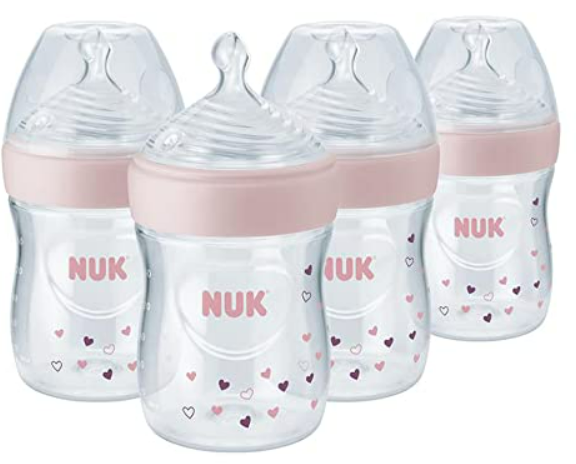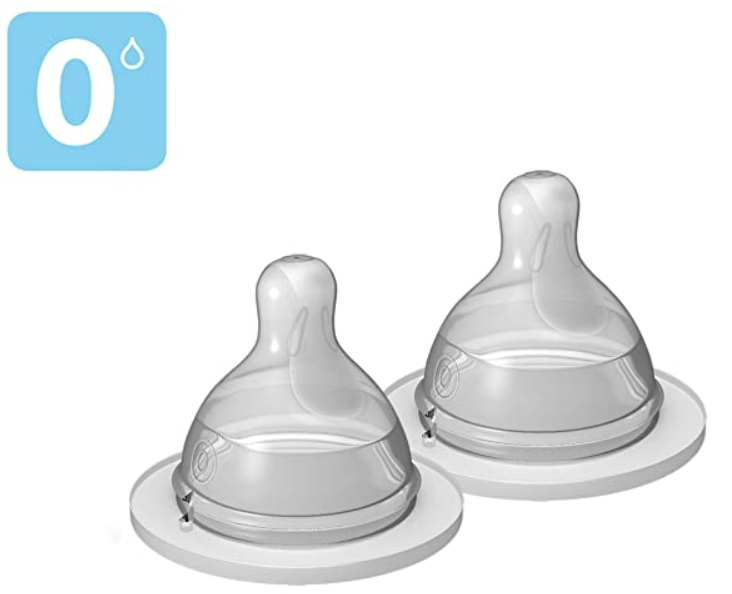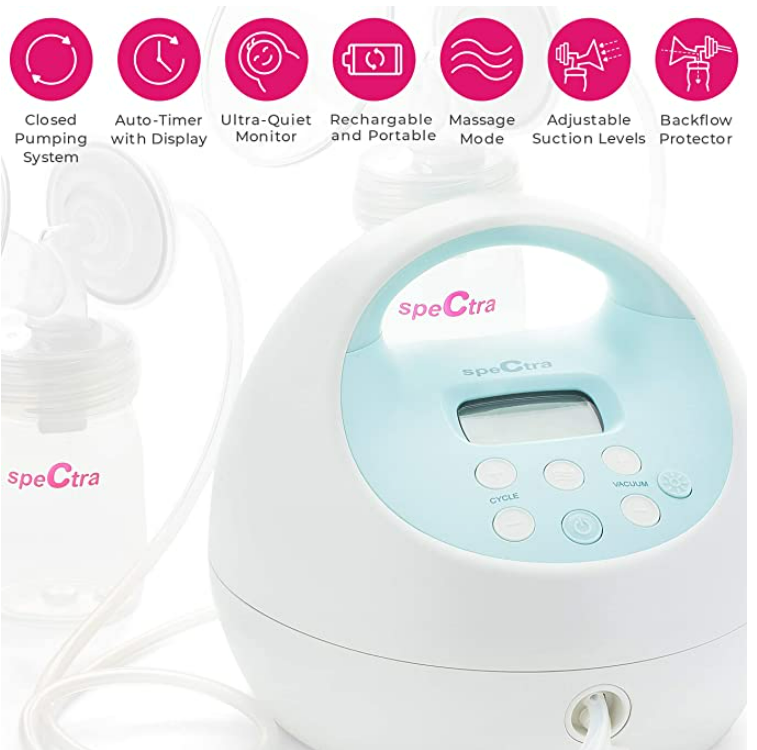Combination feeding can seem daunting, but with the proper guidance, it can be a successful and practical way to feed your baby.
Whether you’re a working mom, have had difficulty with breastfeeding, or are struggling with milk supply issues, combination feeding allows you to provide your baby with the best of both worlds.
This post will provide tips and answer your frequently asked questions about combination feeding based on my experience.
*The information in this post is based on my experience and research as a first-time mom. I don’t have any medical training or special certifications in lactation or breast feeding. This is solely based on what I’ve done for my baby based on my research. It’s super important to discuss any concerns or plans you have with your baby’s pediatrician, trained lactation consultants, and hospital staff when you’re giving birth.
Combination feeding is a way of feeding your baby using both breast milk and formula. It can be a practical solution for moms who may not be able to exclusively breastfeed or want the flexibility to use both breast milk and formula. By combining the two, you can ensure your baby is getting the nutrients they need while also providing the convenience of formula feeding.
If you’re considering combination feeding, there are a few things you should keep in mind.
The next sections will provide tips on how to get started, how to balance breast milk and formula, and how to manage the transition. We’ll also answer some common questions about combination feeding, including how it might affect your milk supply, how to choose the right formula, and more.
Keep reading to learn everything you need to know about combination feeding!
What is Combination (Combo) Feeding?
Combination feeding, also known as combo feeding, is a way of feeding your baby using both breast milk and formula.
It allows you to provide the benefits of both breastfeeding and formula feeding to your baby.
With combination feeding, you can breastfeed your baby when you’re able to, whether it’s at the breast or bottle feeding pumped milk, and supplement with formula when needed.
This can be a practical solution for moms who may not be able to exclusively breastfeed due to a whole host of reasons including medical, personal, or work-related reasons, or for those who want the flexibility to use both breast milk and formula.
Combination feeding also allows for greater flexibility in your feeding routine. For example, you can breastfeed your baby when you’re at home, and use formula when you’re out or when someone else is caring for your baby.
It can also be a way to manage issues like low milk supply, which can make exclusive breastfeeding challenging.
By combining breast milk and formula, you can ensure your baby is getting the nutrients they need while also providing the convenience of formula feeding.

What Percentage of Babies Drink Formula?
Formula feeding is a common practice in many households. According to the Centers for Disease Control and Prevention (CDC), approximately 85% of babies are breastfed at birth. However, by the time they reach six months of age, the percentage drops to 25%, indicating that the majority of babies are consuming formula at some point during their first year of life.
There are many reasons why you may choose to supplement with formula, including low milk supply, medical issues, personal preferences, and returning to work. Formula feeding can provide a convenient and reliable source of nutrition for babies, and many modern formulas are formulated to mimic the nutritional content of breast milk.
While breast milk is generally considered the best source of nutrition for babies, formula can be a safe and effective alternative when breastfeeding is not possible or desired. With the right guidance and support, you can make informed decisions about the best way to feed your baby and ensure they are getting the nutrients they need to thrive.
What Bottles Are Best For Combo Feeding?
We have been using the bottles that came with my Spectra pump but replaced the nipples with size 0 low flow from Mam. It’s worked great.
It’s still a bottle in the end, which is going to feel different, but at least the milk flow is as slow as we can make it without it being breastfeeding.
One of the lactation consultants we saw said that she kept her baby on a size 0 nipple until her baby was seven months old, and we’ll probably do the same.
The other bottles we’re using are NUKs.
The great thing about NUKs is their nipples are shaped to be more like a natural nipple shape.
Both have worked great for us. I think there’s a lot of noise about which nipple type and shape is best, but my experience was experimenting with what he liked and sticking with that. We tried a couple of others like Dr. Brown’s anti-colic and for whatever reason, he just didn’t like it as much.
A pack of 4 NUK bottles is around $20, and you can get the MAM nipple replacement for just $7 for 2.
What Are The Reasons To Supplement With Formula?
How long a baby is breastfed, whether at the breast or bottle-fed pumped breast milk, is influenced by many factors, such as the following identified by the CDC:
- Lactation issues and low milk supply
- Latching complications and maternal discomfort
- Infant nutrition and weight issues
- Taking medications while breastfeeding
- Lack of or unsupportive parental leave policies
- Cultural norms
- Lack of a support system
- Unsupportive hospital practices and policies
- Personal preference
While supplementing with formula can be a practical solution for many families, it’s important to note that breastfeeding has many benefits for both the mother and the baby.
Before supplementing with formula, you should consult with a healthcare professional to determine the best course of action for your individual situation.

What are The Benefits of Combination Feeding?
Combination feeding can provide many benefits for both the mother and the baby. Here are some of the advantages of combination feeding:
- Increased flexibility: Combination feeding allows you to switch between breast milk and formula, providing greater flexibility in the feeding routine. This can be especially helpful for moms who are returning to work or are otherwise unable to exclusively breastfeed.
- Improved milk supply: By supplementing with formula, you can help to improve your milk supply by reducing the demand on your breasts. This can be especially helpful for moms who are struggling with low milk supply.
- Better sleep: By supplementing with formula at night, you can get more sleep and feel more rested. This can help to improve your overall well-being and make you better able to care for your baby.
- Improved nutrition for the baby: Combination feeding can ensure that the baby is getting enough food to grow and develop, while also providing the immune-boosting benefits of breast milk.
- Shared feeding responsibilities: Combination feeding allows other family members to participate in feeding the baby, providing opportunities for bonding and nurturing.
It’s important to note that while combination feeding can provide many benefits, it’s not without its challenges.
How do You start supplementing with formula?
Supplementing with formula can be a big decision, and it’s important to approach it with care and guidance. Here are some steps to consider when starting to supplement with formula:
- Talk to a healthcare professional: Before starting to supplement with formula, it’s important to talk to a healthcare professional, such as a pediatrician or lactation consultant. They can provide guidance and support in making an informed decision about supplementing.
- Choose the right formula: There are many different types of formula available, including cow’s milk-based, soy-based, and hypoallergenic formulas. It’s important to choose a formula that is appropriate for the baby’s age, health, and any allergies or intolerances. We ended up going with Aptamil (review on Amazon) because it’s European, and there are more restrictions in place that we felt were important for quality control.
- Start slowly: When starting to supplement with formula, it’s important to start slowly and gradually increase the amount of formula over time. This can help to prevent digestive issues and allow the baby’s body to adjust to the new feeding routine.
- Establish a feeding routine: It’s important to establish a feeding routine that works for both you and baby. This can include a combination of breast milk and formula, with specific times and amounts for each feeding.
- Monitor the baby’s weight and health: As with any feeding routine, it’s important to monitor the baby’s weight and health to ensure they are getting enough nutrition. A healthcare professional can provide guidance on how to monitor the baby’s growth and development.
Starting to supplement with formula can be a big decision, but with the right guidance and support, it can be a safe and effective way to ensure the baby is getting enough nutrition to thrive.
Combination Feeding Schedule
Establishing a combination feeding schedule can be a helpful way for you to ensure that your baby is getting enough nutrition while also providing the flexibility of using both breast milk and formula. Here are some tips for creating a combination feeding schedule:
Newborn Exclusive Breast Pumping Schedule
For mothers who exclusively pump for their newborns, a pumping schedule can help maintain a consistent milk supply and ensure that the baby is receiving enough milk.
Here is a sample pumping schedule for a newborn baby:
- Days 1-3: Pump at least 8 times per day, including at least once during the night.
- Days 4-14: Pump at least 8 times per day, spacing pumping sessions evenly throughout the day and including at least once during the night.
- Days 15-30: Pump at least 7 times per day, spacing pumping sessions evenly throughout the day and including at least once during the night.
It’s important to remember that every mother and baby is different, and the frequency and duration of pumping sessions may need to be adjusted to meet individual needs.
Partial Pumping Schedule
For mothers who are supplementing breastfeeding with pumping, a partial pumping schedule can help balance milk supply and demand, while ensuring that the baby is receiving enough milk.
Here is a sample partial pumping schedule:
- Start with breastfeeding on one side, and then pump the other side after the feeding to empty the breast and maintain milk supply.
- Aim to pump at least once or twice per day, preferably at the same time each day to maintain a consistent milk supply.
- Pump for about 10-15 minutes, or until the breast feels empty.
Determine the baby’s nutritional needs
The baby’s nutritional needs will depend on their age, weight, and growth rate. A healthcare professional can provide guidance on how much breast milk and formula the baby should be consuming each day.
Establish a routine
It’s important to establish a routine that works for both you and your baby. This can include specific times for each feeding, as well as the amounts of breast milk and formula to be used.
Start with breast milk
It’s generally recommended to start each feeding with breast milk, as this will provide the baby with the immune-boosting benefits of breast milk while also stimulating milk production.
If the baby is still hungry after a breastfeeding session, or if you are unable to produce enough milk, supplementing with formula can be a helpful way to ensure your baby is getting enough nutrition.
Many families choose to supplement at night to help the baby sleep better and therefore, the entire house sleeps better. You can breastfeed during the day and formula feed at night.

Monitor the baby’s weight and health
As with any feeding routine, it’s important to monitor the baby’s weight and health to ensure they are getting enough nutrition. A healthcare professional can provide guidance on how to monitor the baby’s growth and development.
Establishing a combination feeding schedule can take time and experimentation, but with patience and persistence, you can find a routine that works best for your individual situation.
My Experience with Combination Feeding
Leading up to the birth of my son, I romanticized the idea of breastfeeding and thought it would be one of my favorite parts of welcoming my baby into the world.
I had no idea how hard my journey was going to be.
We started out meeting with two different lactation consultants while we were still in the hospital who were great, but did little to calm my nerves about feeding my baby. It felt so overwhelming at the time being a first-time mom.
I thought it would come naturally to me, my baby would latch on right away, it would feel amazing, and so would begin our easy breezy nursing journey.
That vision turned out to be much different, and I had struggles with latching, extreme pain, nipple bleeding, and blistering, and my baby would nurse for over an hour on each side if I let him (a sign baby is possibly not feeding efficiently).
The first couple of weeks I tried so hard to come at it with different holds, breathing through painful feed after painful feed. I just thought if I can get through the next week then the next, it would all click into place eventually.
We saw two more lactation consultants, all in the same hospital once we were home. It helped to get their confirmation that everything looked ok, but nothing would change. I started getting extremely painful shooting bolts in my breasts on the right side every time I tried to breastfeed, and it would last for hours.
I felt so much shame that I couldn’t figure it out, that I was failing my son because I couldn’t feed him, and ended up putting so much pressure on myself that it was unsustainable. We started supplementing formula at night at first to make sure he was getting enough nutrition and to help him (and us) get some sleep.
And it helped. Emotionally and physically.
My husband could help feed our baby, giving them an opportunity to bond. And I could try to get some sleep and calm my frayed nerves.
I finally realized one day that I was going to have to transition to mostly pumping breastmilk and bottle feeding, mixed with formula feeds. I still wish that I could nurse him every day, but in the end, this solution is what worked for us and ultimately what was best for my mental health and for our baby to get the nutrition he needed.
We still bond every time he eats, we’re able to make eye contact, and smile at each other and giggle. It just adds more to the process, because there’s the prepping, the pumping, the cleaning of pump parts, and then bottle feeding. So it adds more time, steps, etc. but my baby is getting breastmilk from me.
And at the end of the day, the most important thing is he gets fed, I take care of myself, and we are able to enjoy these precious first few months together.
Without shame, and only love and adoration.
How to Keep Breastfeeding when Returning to Work
Returning to work after having a baby can be a challenging time, especially if you want to continue breastfeeding. It’s hard enough to think of leaving your baby for an entire day, never mind worrying about reacclimating back to work and thinking about pumping.
But with the right preparation and support, it’s possible to keep breastfeeding while working. Here are some tips on how to keep breastfeeding when returning to work:
Start preparing early
It’s important to start preparing for your return to work several weeks or even months in advance. This can include building up a supply of expressed breast milk, practicing pumping, and finding a childcare provider who supports breastfeeding. You can ask about breastmilk and feeding when you talk to or tour childcare facilities. See my list of questions to ask here.
Talk to your employer
Talk to your employer about your plans to continue breastfeeding when you return to work. Many employers are supportive of breastfeeding and may be able to provide accommodations, such as a private place to pump.
Invest in a good breast pump
A good breast pump can make all the difference when it comes to pumping at work. Look for a pump that is comfortable, efficient, and easy to use.
You may also want to consider a double electric pump, which can save time and increase milk production. I ended up going with the Spectra, which I’ll write more about soon. I also tried the Elvie because I was excited about being more mobile, but it didn’t work for me in the end.
The short story is every time I tried using the Elvie, there was always either a technical issue or a physical one.
Every time I used it, my boobs would get hot and itchy. That never happened with the Spectra.
I also found the Elvie app to not do a very good job of accurately estimating how much milk was being pumped.
I’m sure a lot of it comes down to user error, but at that price, it feels like everything should run smoothly.
The Spectra on the other hand has been my ride or die. I’ve gotten used to carrying it around and don’t even notice it anymore after months of pumping every two hours.
Create a pumping schedule
Create a pumping schedule that works for you and your baby. This may include pumping during your lunch break or other designated break times, as well as before and after work. Refer back to the sample schedules included earlier.
Again, it’s important to remember that every mother and baby is different, and the frequency and duration of pumping sessions may need to be adjusted to meet individual needs.
It’s also important to work with a lactation consultant or healthcare provider to ensure that the baby is receiving enough milk and to monitor milk supply and breastfeeding progress.
Store your milk properly
Proper milk storage is important to ensure the safety and quality of your milk. Follow recommended guidelines for storing and thawing breast milk, and label your milk with the date and time it was expressed.
Stay connected with your baby
It can be difficult to be away from your baby for long periods of time, but staying connected can help. Consider using a video chat app to check in with your baby during the day, or have your childcare provider send you updates and photos.
Take care of yourself
Breastfeeding and working can be tiring, so it’s important to take care of yourself. Get enough rest, eat a healthy diet, and stay hydrated. You may also want to consider joining a breastfeeding support group to connect with other working moms.
Returning to work doesn’t have to mean the end of breastfeeding. With the right preparation and support, you can continue to provide your baby with the many benefits of breast milk, even when you’re away from them during the day.
Just know that it requires fortitude, so having a good support system in place goes a long way too. It’s important to do little things for yourself to keep up your morale and know that it’s not forever, and you’re doing the absolute best you can for your baby. And that your baby loves you.

What to Do with Recalled Formula?
If you have a recalled formula, it’s important to take action to ensure the safety of your baby. Here are the steps you should take:
- Stop using the formula: The first and most important step is to stop using the formula immediately. Don’t feed it to your baby, and don’t use it to mix with other foods or drinks.
- Check the recall notice: Check the recall notice to see if the formula you have is affected by the recall. The notice should provide details about the specific products and lot numbers that are being recalled.
- Contact the manufacturer: If you have a recalled formula, contact the manufacturer to find out what to do next. They may offer a refund or replacement, or they may provide instructions for safe disposal.
- Dispose of the formula safely: If the manufacturer advises you to dispose of the formula, it’s important to do so safely. Don’t throw it in the trash or pour it down the sink. Instead, follow the manufacturer’s instructions for safe disposal, which may include returning it to the store where you purchased it.
- Watch for symptoms: If your baby has consumed the recalled formula, watch for symptoms of illness. These may include vomiting, diarrhea, and fever. If you notice any of these symptoms, contact your healthcare provider right away.
- Choose a safe alternative: If you need to find a new formula for your baby, choose a safe and appropriate alternative. Talk to your healthcare provider or a certified lactation consultant for advice on choosing a formula that meets your baby’s nutritional needs.
Recalled formula can be a scary situation for any parent, but it’s important to take action to ensure the safety of your baby. By following these steps, you can help protect your baby and make an informed decision about what to do next.
Can You Save Money on Formula?
Formula can be a significant expense for parents, especially for those who need to use it exclusively. However, there are ways to save money on formula without compromising on quality or safety. Here are some tips on how to save money on formula:
- Compare prices: Don’t assume that all formula brands and types are the same price. Compare prices at different stores and online retailers to find the best deal. Consider buying in bulk to save even more.
- Sign up for rewards programs: Many formula brands offer rewards programs that can help you save money. These programs may offer coupons, discounts, or free samples. Sign up for these programs and take advantage of the savings they offer.
- Look for coupons: Check online and in-store for coupons that can be used to save money on formula. You can also sign up for manufacturer newsletters and follow them on social media to stay up-to-date on the latest promotions and discounts.
- Buy store-brand formula: Store-brand formula is often significantly cheaper than name-brand formula, but it is still regulated by the FDA and meets the same nutritional standards. Consider trying a store-brand formula to see if it works for your baby.
- Buy powdered formula: Powdered formula is typically less expensive than liquid formula. Look for bulk packages to save even more money.
- Use as directed: Using more formula than recommended can lead to unnecessary expense. Make sure to follow the instructions on the formula packaging to avoid wasting formula.
- Use a pitcher: If you use powdered formula, consider using a formula pitcher to make larger batches at once. This can save time and reduce waste, as you can mix only the amount you need for each feeding.
- Breastfeed if possible: Breastfeeding is the most cost-effective way to feed your baby. If possible, consider breastfeeding exclusively or combining breast milk and formula to save money.
By using these tips, you can save money on formula without compromising your baby’s nutrition or safety. Remember to always follow the instructions on the formula packaging and talk to your healthcare provider if you have any concerns about your baby’s nutrition.
How do I start to introduce my baby to a bottle?
Introducing a bottle to a breastfed baby can be a daunting task, but with some patience and persistence, it can be done successfully. Here are some tips on how to introduce a bottle to your baby:
- Wait until breastfeeding is well-established: It’s generally recommended to wait until your baby is at least 4-6 weeks old and breastfeeding is well-established before introducing a bottle. This can help reduce the risk of nipple confusion and ensure that your milk supply is well-established.
- Choose the right bottle: Look for a bottle that mimics the shape and flow of the breast as closely as possible. There are many different types of bottles available, so it may take some trial and error to find the right one for your baby.
- Have someone else offer the bottle: It’s often easier for someone else to offer the bottle to your baby, as they may be less likely to associate it with breastfeeding. Consider having your partner or another caregiver offer the bottle while you’re out of the room.
- Start with a small amount: Offer a small amount of milk in the bottle at first, such as an ounce or two. This can help your baby get used to the sensation of drinking from a bottle.
- Be patient: It may take several attempts before your baby accepts the bottle, so be patient and don’t give up too quickly. Offer the bottle at different times of day and in different settings to see what works best for your baby.
- Offer the bottle when your baby is hungry but not too hungry: If your baby is too hungry, they may become frustrated and refuse the bottle. On the other hand, if they’re not hungry enough, they may not be interested in drinking from the bottle. Try offering the bottle when your baby is just starting to show signs of hunger.
- Stay calm and relaxed: Your baby may sense your stress and tension, so it’s important to stay calm and relaxed during the process. If your baby doesn’t accept the bottle right away, take a break and try again later.
Introducing a bottle to a breastfed baby can take time and patience, but with these tips, you can increase your chances of success. Remember to follow your baby’s lead and adjust your approach as needed.
Can I start breastfeeding after my baby has been formula or Combo feeding?
If you’ve been exclusively or mostly bottle-feeding for months and want to start breastfeeding, it’s important to know that it’s not always an easy process. However, it is possible to restart breastfeeding with patience, persistence, and support. Here are some tips to help you get started:
- Seek support: Consider working with a lactation consultant or a breastfeeding support group. They can provide guidance and support as you work to restart breastfeeding.
- Take it slow: Start by offering the breast for a few minutes at a time, several times a day. It’s important to take things slow and not overwhelm your baby, especially if they’re used to drinking from a bottle.
- Use skin-to-skin contact: Skin-to-skin contact can help stimulate milk production and increase your baby’s interest in breastfeeding. Try holding your baby skin-to-skin and offer the breast during this time.
- Offer a small amount of milk in a bottle: You may need to offer a small amount of milk in a bottle before offering the breast, especially if your baby is used to the flow and ease of bottle feeding.
- Stay relaxed and calm: Stress and tension can make it more difficult to restart breastfeeding. Stay relaxed and calm, and don’t pressure yourself or your baby. It may take time, but it is possible to successfully restart breastfeeding.
- Be patient: It’s important to be patient and not give up too quickly. Your baby may need time to adjust to breastfeeding again, so continue to offer the breast and be consistent in your approach.
- Use breast compressions: Breast compressions can help stimulate milk flow and encourage your baby to continue breastfeeding. Gently massage your breast while your baby is nursing to help keep the milk flowing.
- Pump to stimulate milk production: If your baby isn’t able to fully nurse yet, consider pumping to stimulate milk production and build up your milk supply. In my experience, it was easier for my baby to latch onto my breast after pumping because of the change in nipple shape.
It’s important to remember that every breastfeeding journey is different, and there’s no right or wrong way to do it. With patience, persistence, and support, it’s possible to restart breastfeeding and develop a successful breastfeeding relationship with your baby.

What Is Partial Weaning And Will it Affect My Milk Supply?
Partial weaning is the process of gradually reducing the number of breastfeeding sessions while introducing other sources of nutrition, such as solid foods or formula. This means that your baby continues to receive some breast milk, but the frequency and amount of breastfeeding decrease over time.
See my post on Stage 1 foods as a starting place for what to expect when you start introducing foods and consider weaning.
Partial weaning may be recommended for various reasons, such as if you need to return to work or if your baby is having difficulty transitioning to solid foods. It can also be a way to gradually transition your baby from breast milk to a combination of breast milk and formula, or to prepare them for full weaning.
Partial weaning can be done in different ways, depending on yours and your baby’s needs. Some mothers may choose to replace one breastfeeding session at a time with a bottle or solid foods, while others may reduce the length of each breastfeeding session over time.
It’s important to take things slow and follow the baby’s cues to ensure a smooth transition.
It’s worth noting that partial weaning doesn’t necessarily mean the end of the breastfeeding relationship. Some mothers continue to breastfeed for several months or even years after starting partial weaning, while others may eventually choose to fully wean their baby.
The most important thing is to do what works best for both the mother and the baby, and to ensure that the baby continues to receive adequate nutrition and care.
Does Supplementing with Formula Reduce the Benefits of Breastfeeding?
Supplementing with formula does not necessarily reduce the benefits of breastfeeding, but it can affect the breastfeeding relationship and the amount of breast milk produced.
Breast milk provides numerous health benefits to babies, including protection against infections, improved brain development, and reduced risk of obesity and chronic diseases later in life.
However, when a baby is given formula in addition to breast milk, they may breastfeed less frequently, which can reduce the stimulation of the breasts and lead to a decrease in milk supply. In that case, I’d recommend adding pumping into your schedule if you haven’t already. It can help to keep your milk production stimulated.
Additionally, formula is not identical to breast milk, and while it can provide adequate nutrition for a baby, it does not contain the same immune-boosting properties and other unique components found in breast milk. Therefore, if a baby is given formula regularly in place of breast milk, they may miss out on some of the health benefits of breastfeeding.
That being said, supplementing with formula is a useful tool for mothers who are struggling with low milk supply or other breastfeeding challenges. It can also be a way to ensure that the baby is getting enough nutrition if they are not gaining weight or if the mother is unable to breastfeed due to work or other reasons.
Are There Rules for Mixing Breast Milk and Formula in the Same Bottle?
Mixing breast milk and formula in the same bottle is generally not recommended, as it can be difficult to properly measure and prepare the formula and can lead to overfeeding or underfeeding the baby. However, there may be situations where it is necessary or desired to do so, such as if the mother is supplementing with formula or if the baby is used to a particular taste or texture.
If you do choose to mix breast milk and formula in the same bottle, here are some general guidelines to follow:
- Always prepare the formula according to the manufacturer’s instructions and mix it thoroughly to ensure that there are no clumps or pockets of unmixed powder.
- Cool the formula in the refrigerator before adding it to the breast milk. This can help prevent the breast milk from spoiling and can also reduce the risk of overfeeding the baby.
- Add the formula to the breast milk in small amounts, stirring or shaking gently to mix it together. Avoid shaking the bottle vigorously, as this can cause the breast milk to separate or become foamy.
- Use the mixed breast milk and formula within 24 hours, storing it in the refrigerator and avoiding exposure to extreme temperatures or direct sunlight.
It’s important to note that mixing breast milk and formula can affect the composition and properties of the breast milk, as well as the taste and texture of the formula.
Also, the baby’s digestive system may respond differently to a mixture of breast milk and formula compared to exclusive breast milk or exclusive formula. Therefore, it’s generally recommended to feed breast milk and formula separately, allowing the baby’s body to process each one separately and to receive the full benefits of each type of milk.

How Often and How Much Should My Baby Eat?
The frequency and amount of feeding will vary depending on your baby’s age, weight, and appetite.
In general, newborn babies need to feed frequently because their stomachs are small and they need to consume small amounts of milk frequently to meet their nutritional needs.
As babies grow, they can consume larger amounts of milk less frequently. Here are some general guidelines:
- Newborns (0-3 months): They typically feed every 2-3 hours, or 8-12 times in a 24-hour period. They will consume about 2-3 ounces (60-90 mL) per feeding.
- Infants (3-6 months): They may feed less frequently, around every 3-4 hours, or 5-6 times in a 24-hour period. They will consume about 5-6 ounces (150-180 mL) per feeding.
- Older infants (6-12 months): They will typically feed even less frequently, around every 4-5 hours, or 4-5 times in a 24-hour period. They will consume about 7-8 ounces (210-240 mL) per feeding.
It’s important to note that these are general guidelines and every baby is unique.
Your baby may have a smaller or larger appetite, which will impact the frequency and amount of feeding.
Also, breastfed babies may feed more frequently than formula-fed babies, as breast milk is digested more quickly.
You can look for signs that your baby is hungry, such as sucking on their hands, rooting, or making sucking noises. Conversely, signs that your baby is full include pushing the bottle away, turning their head, or falling asleep.
If you have any concerns about your baby’s feeding habits or growth, talk to your healthcare provider.
They can help you determine whether your baby is getting enough to eat and offer advice for adjusting feeding schedules or amounts.
Final Thoughts
Feeding your most precious little one is the most important thing you will be doing for them to make sure they are getting all of the important nutrition they need to thrive. It can feel daunting and overwhelming, especially for first-time moms and dads to know if you’re doing it right and if they’re getting what they need.
The stress is compounded if you are having struggles in any area of feeding. I hope this information helps to guide you in figuring out the best feeding plan for your and your baby.
You’re doing great, and you will figure it out. Just remember that.




